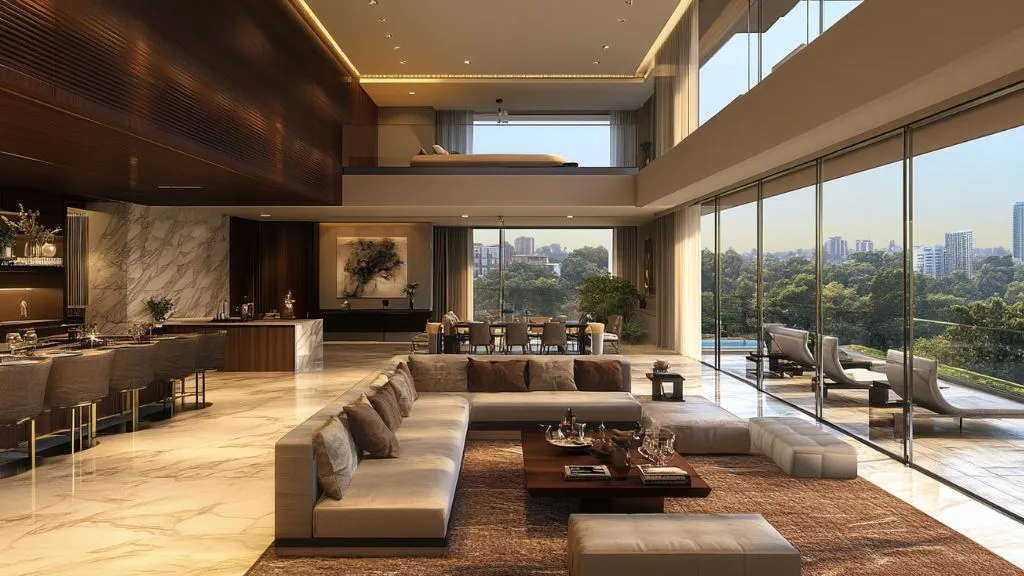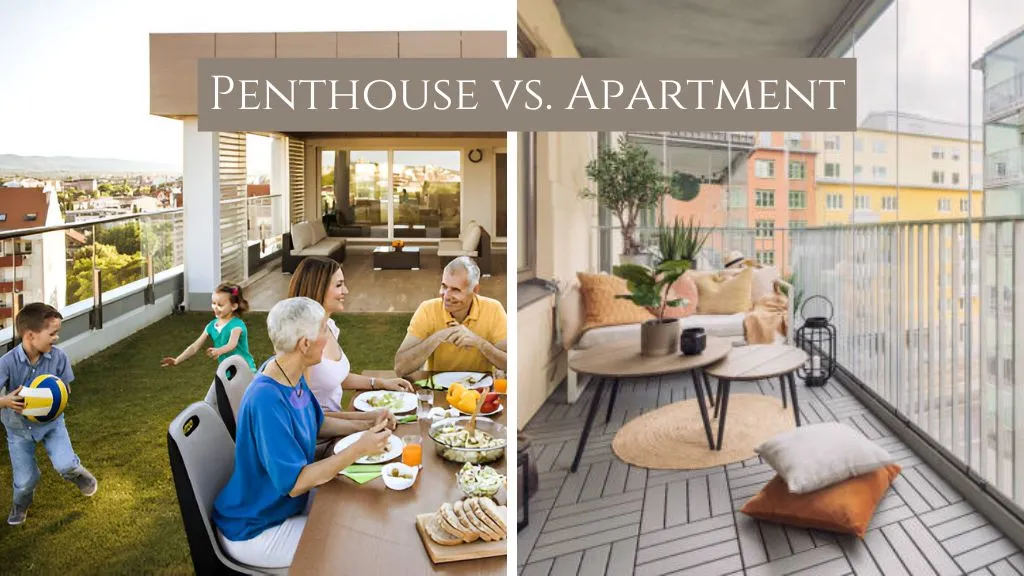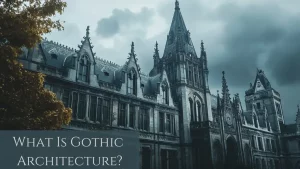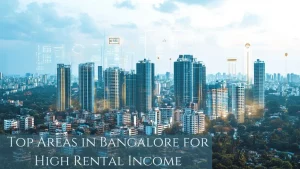
Luxury city living has been altered, and penthouses now represent the apex of exclusivity and elegance. From breathtaking skyline views, private decks, and high-end amenities, penthouses offer an upscale lifestyle appealing to the high-end homebuyer. But what is a penthouse anyway, and how does a penthouse differ from an ordinary apartment?
This guide discusses the definition of a penthouse, its pros and cons, and will assist you in deciding whether the purchase of a penthouse building is the right decision for you.
What is a Penthouse?
Penthouses are among the most lavish apartments that are found at the very top of a tower. Unlike the normal apartments, penthouses have large floor plans and access to terraces which are private and exclusive. They also have panoramic views and high standard amenities.
Penthouse Meaning & Origin
The term penthouse has evolved from the French apentis, meaning an annex or an attached house. Later on, a penthouse referred to the highest and the most luxurious floor of a skyscraper.
Key Features of a Penthouse Building
- Exclusive Top-Floor Location: Provides privacy and spectacular views.
- Spacey Interiors: Larger Floor Area than Conventional Apartments.
- Alfresco, Private: Includes Balconies, Gardens, and Lounge Areas.
- Very High-Quality Features and Amenities: Gourmet Finishes, Smart Home Automation, Concierge Services.
- More Expansive and Aristocratic: A Mark of Luxury Property.
Advantages & Disadvantages of a Penthouse
| Advantages | Disadvantages |
| Unmatched City Views—World-class city views from an open environment. | Higher Costs-—More expensive than normal apartments and typically have high location fees. |
| Exclusive Privacy—On the top floor providing seclusion and peace. | Extreme Weather Exposure—More exposed to heat, cold, and wind due to having a rooftop position. |
| Spacious Layouts—Usually bigger than other units and follow a very modern design. | High Maintenance Costs— More space and premium amenities demand more headaches in maintenance. |
| Luxury Features—Private balconies, roof gardens, and VIP elevators. | Limited Supply—Limited units for penthouses in each building, making them harder to find. |
| Great Resale Value—The property is premium, hence a good investment. | Access Problems-—Relies solely on elevators to access a home, which could be a problem in times of power outages. |
Penthouse vs. Apartment: Key Differences

| Feature | Penthouse | Regular Apartment |
| Location | Topmost floor of a high-rise building | Located on any floor within the building |
| Space & Layout | Larger, open layouts with private outdoor areas | Standard layouts with no private terraces |
| Amenities | High-end features, rooftop access, and concierge services | Common shared amenities like gym, pool, and clubhouse |
| Privacy | More secluded with fewer neighbors | Shared corridors and common areas with multiple units |
| Cost | Premium pricing due to exclusivity | Comparatively lower cost |
| Resale Value | Higher appreciation potential | Moderate resale value based on market demand |
How Much Does a Penthouse Cost in India?
Penthouses are highly sought after in metropolitan cities, where luxury real estate is in high demand. The price of a penthouse depends on the city, location, project, and available amenities.
Here’s a breakdown of penthouse prices in major Indian cities:
| City | Price Range |
| Delhi NCR | ₹5-12 crore |
| Mumbai | ₹10-60 crore |
| Bangalore | ₹2-7 crore |
| Pune | ₹6-13 crore |
| Chennai | ₹4-6 crore |
| Kolkata | ₹3-14 crore |
| Ahmedabad | ₹2-11 crore |
Note: Prices are approximate and can vary based on size, location, and developer specifications.
Preferential Location Charges on Penthouses
Since penthouses are exclusive and offer panoramic views, they are subject to Preferential Location Charges (PLC).
- PLC can add ₹100 or more per square foot to the overall cost.
- The higher the floor, the higher the PLC, making penthouses significantly more expensive than regular apartments.
Problems with Penthouses: What to Consider Before Buying
While penthouses offer luxury, there are certain challenges potential buyers must be aware of:
1. Weather Extremes & Temperature Control
- Penthouses are more exposed to direct sunlight, rain, and wind.
- Higher cooling & heating costs due to lack of upper-floor insulation.
2. Security & Privacy Risks
- While penthouses provide seclusion, they may be more vulnerable to break-ins due to rooftop access points.
3. Maintenance & Repair Costs
- Roof leakage, elevator dependency, and larger cleaning areas add to upkeep expenses.
4. Accessibility Challenges
- In case of elevator failures, accessing the penthouse can be difficult.
5. Resale Liquidity
- Fewer buyers in the market for ultra-luxury properties, making resale less liquid than mid-range apartments.
Conclusion: Is a Penthouse Worth It?
A penthouse is the ultimate symbol of luxury living, offering exclusive amenities, stunning views, and unparalleled privacy. However, it comes with higher costs, maintenance responsibilities, and accessibility challenges.
If you prioritize prestige, space, and breathtaking views, investing in a penthouse could be a dream come true. But if you seek affordability and practicality, a regular apartment might be a better fit.
Ultimately, the decision depends on your budget, lifestyle preferences, and long-term investment goals.






